 W
WAimery of Lusignan, erroneously referred to as Amalric or Amaury in earlier scholarship, was the first King of Cyprus, reigning from 1196 to his death. He also reigned as the King of Jerusalem from his marriage to Isabella I in 1197 to his death. He was a younger son of Hugh VIII of Lusignan, a nobleman in Poitou. After participating in a rebellion against Henry II of England in 1168, he went to the Holy Land and settled in the Kingdom of Jerusalem.
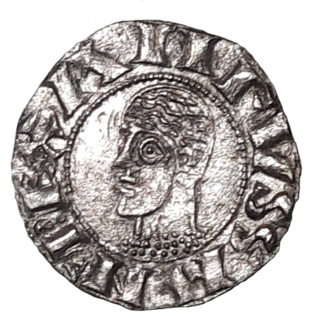 W
WAlfonso I, called the Battler or the Warrior, was the king of Aragon and Navarre from 1104 until his death in 1134. He was the second son of King Sancho Ramírez and successor of his brother Peter I. With his marriage to Urraca, queen regnant of Castile, León and Galicia, in 1109, he began to use, with some justification, the grandiose title Emperor of Spain, formerly employed by his father-in-law, Alfonso VI. Alfonso the Battler earned his sobriquet in the Reconquista. He won his greatest military successes in the middle Ebro, where he conquered Zaragoza in 1118 and took Ejea, Tudela, Calatayud, Borja, Tarazona, Daroca, and Monreal del Campo. He died in September 1134 after an unsuccessful battle with the Muslims at the Battle of Fraga.
 W
WAndrew, Duke of Calabria was the first husband of Joanna I of Naples, and a son of Charles I of Hungary and brother of Louis I of Hungary.
 W
WAntoine was the King of Navarre through his marriage to Queen Jeanne III, from 1555 until his death. He was the first monarch of the House of Bourbon, of which he was head from 1537. He was the father of Henry IV of France.
 W
WConrad of Montferrat was a nobleman, one of the major participants in the Third Crusade. He was the de facto King of Jerusalem by virtue of his marriage to Isabella I of Jerusalem from 24 November 1190, but officially elected only in 1192, days before his death. He was also the eighth Marquess of Montferrat from 1191.
 W
WHenry Stuart, Lord Darnley was the second husband of Mary, Queen of Scots. From his marriage in 1565, he was king consort of Scotland. He was created Duke of Albany shortly before his marriage. Less than a year after the birth of his and Mary's only child, King James VI of Scotland and I of England, Darnley was murdered at Kirk o' Field in 1567. Many contemporary narratives describing his life and death refer to him as Lord Darnley, his title as heir apparent to the Earldom of Lennox, and it is by this appellation that he is known in history. On his mother's side he was a great-grandson of King Henry VII of England.
 W
WFerdinand II was King of Aragon from 1479 until his death in 1516. As the husband of Queen Isabella I of Castile, he was King of Castile from 1474 to 1504 as Ferdinand V. He reigned over a dynastically unified Spain jointly with Isabella; together they are known as the Catholic Monarchs. Ferdinand is considered de facto the first king of Spain, being described as such during his own lifetime, although Castile and Aragon remained de jure two different kingdoms until the Nueva Planta decrees of 1707 to 1716.
 W
WDom Ferdinand II was a German prince of the House of Saxe-Coburg and Gotha-Koháry, and King of Portugal jure uxoris as the husband of Queen Maria II, from the birth of their first son in 1837 to her death in 1853.
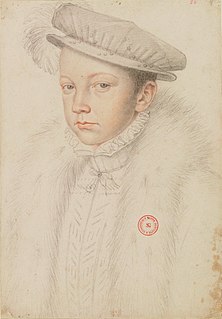 W
WFrancis II was King of France from 1559 to 1560. He was also King consort of Scotland as a result of his marriage to Mary, Queen of Scots, from 1558 until his death in 1560.
 W
WFrancis I was the Duke of Lorraine and Bar (1729–1737), and later Grand Duke of Tuscany (1737–1765), who married Maria Theresa of Austria and became Holy Roman Emperor (1745–1765) and Archduke of Austria (1740–1765). His wife effectively ruled Austria and the Holy Roman Empire. They were the founders of the Habsburg-Lorraine dynasty. The oldest surviving son of Leopold, Duke of Lorraine, Francis left the duchy for the deposed Polish king Stanisław Leszczyński in exchange for the Grand Duchy of Tuscany as one of the terms ending the War of the Polish Succession in 1738. The duchy and the ducal title to Lorraine and Bar passed to King Louis XV of France upon Leszczynski's death in 1766, though Francis and his successors retained the right to style themselves as dukes of Lorraine and Bar.
 W
WFrederick II was King of Sicily from 1198, King of Germany from 1212, King of Italy and Holy Roman Emperor from 1220 and King of Jerusalem from 1225. He was the son of emperor Henry VI of the Hohenstaufen dynasty and Queen Constance of Sicily of the Hauteville dynasty.
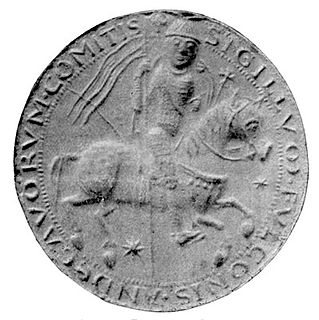 W
WFulk, also known as Fulk the Younger, was the count of Anjou from 1109 to 1129 and the king of Jerusalem from 1131 to his death. During his reign, the Kingdom of Jerusalem reached its largest territorial extent.
 W
WHenry VI, a member of the Hohenstaufen dynasty, was King of Germany from 1169 and Holy Roman Emperor from 1191 until his death. From 1194 he was also King of Sicily.
 W
WJohn I was king of the Crown of Castile from 1379 until 1390. He was the son of Henry II and of his wife Juana Manuel of Castile. He was the last monarch of Castile to receive a formal coronation.
 W
WJohn II, called the Great or the Faithless, was King of Aragon from 1458 until his death. As the husband of Queen Blanche I of Navarre, he was King of Navarre from 1425. John was also King of Sicily from 1458 to 1468.
 W
WJohn III was jure uxoris King of Navarre from 1484 until his death, as husband and co-ruler with Queen Catherine.
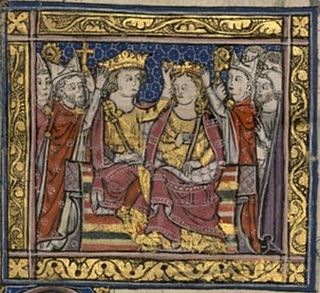 W
WJohn of Brienne, also known as John I, was King of Jerusalem from 1210 to 1225 and Latin Emperor of Constantinople from 1229 to 1237. He was the youngest son of Erard II of Brienne, a wealthy nobleman in Champagne. John, originally destined for an ecclesiastical career, became a knight and owned small estates in Champagne around 1200. After the death of his brother, Walter III, he ruled the County of Brienne on behalf of his minor nephew Walter IV.
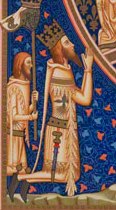 W
WLouis I, also known as Louis of Taranto, was a member of the Capetian House of Anjou who reigned as King of Naples, Count of Provence and Forcalquier, and Prince of Taranto.
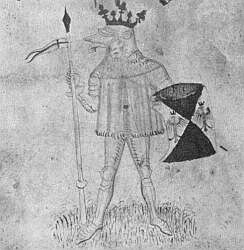 W
WMartin I of Sicily, called "The Younger", was King of Sicily from his marriage to Queen Maria in 1390 until his death.
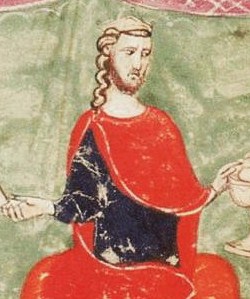 W
WPeter III of Aragon was King of Aragon, King of Valencia, and Count of Barcelona from 1276 to his death. At the invitation of some rebels, he conquered the Kingdom of Sicily and became King of Sicily in 1282, pressing the claim of his wife, Constance II of Sicily, uniting the kingdom to the crown.
 W
WPeter III, nicknamed the Builder, became King of Portugal jure uxoris by the accession of his wife and niece Queen Maria I in 1777, and co-reigned alongside her until his death.
 W
WPhilip the Handsome, also called the Fair, was ruler of the Burgundian Netherlands and titular Duke of Burgundy from 1482 to 1506 and the first Habsburg King of Castile for a brief time in 1506.
 W
WPhilip II also known as "Philip the Prudent" was King of Spain (1556–1598), King of Portugal, King of Naples and Sicily, and jure uxoris King of England and Ireland. He was also Duke of Milan from 1540. From 1555 he was Lord of the Seventeen Provinces of the Netherlands.
 W
WPhilip III, called the Noble or the Wise, was King of Navarre from 1328 until his death. He was born a minor member of the French royal family but gained prominence when the Capetian main line went extinct, as he and his wife and cousin, Joan II of Navarre, acquired the Iberian kingdom and a number of French fiefs.
 W
WPhilip IV, called Philip the Fair, was King of France from 1285 to 1314. By virtue of his marriage with Joan I of Navarre, he was also King of Navarre as Philip I from 1284 to 1305, as well as Count of Champagne. Although Philip was known to be handsome, hence the epithet le Bel, his rigid and inflexible personality gained him other nicknames, such as the Iron King. His fierce opponent Bernard Saisset, bishop of Pamiers, said of him: "he is neither man nor beast. He is a statue."
 W
WSigismund of Bohemia, also known as Sigismund of Luxembourg, was prince-elector of Brandenburg from 1378 until 1388 and from 1411 until 1415, king of Hungary and Croatia from 1387, king of Germany from 1411, king of Bohemia from 1419, king of Italy from 1431, and Holy Roman Emperor from 1433 until 1437, and the last male member of the House of Luxembourg.
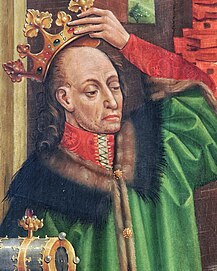 W
WJogaila, later Władysław II Jagiełło was Grand Duke of Lithuania (1377–1434) and then King of Poland (1386–1434), first alongside his wife Jadwiga until 1399, and then sole ruler of Poland. He ruled in Lithuania from 1377. Born a pagan, in 1386 he converted to Catholicism and was baptized as Władysław in Kraków, married the young Queen Jadwiga, and was crowned King of Poland as Władysław II Jagiełło. In 1387 he converted Lithuania to Christianity. His own reign in Poland started in 1399, upon the death of Queen Jadwiga, lasted a further thirty-five years, and laid the foundation for the centuries-long Polish–Lithuanian union. He was a member of the Jagiellonian dynasty in Poland that bears his name and was previously also known as the Gediminid dynasty in the Grand Duchy of Lithuania. The dynasty ruled both states until 1572, and became one of the most influential dynasties in late medieval and early modern Europe. During his reign, the Polish-Lithuanian state was the largest state in the Christian world.